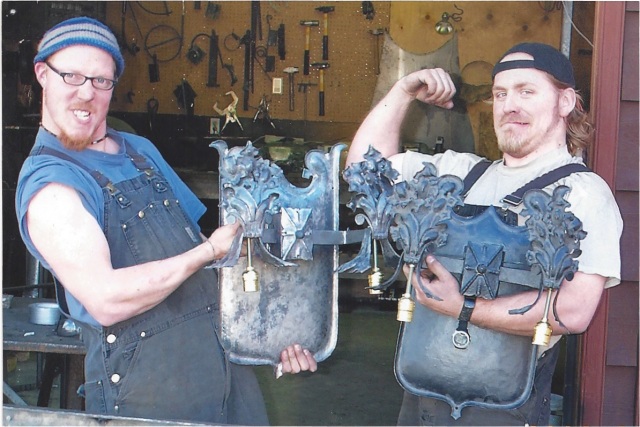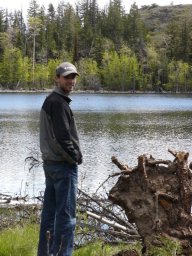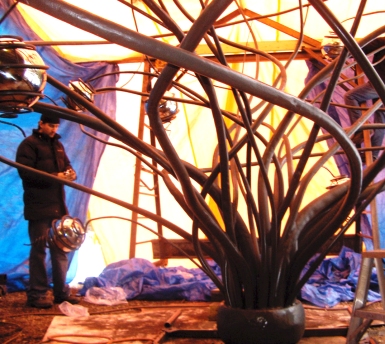On a November day in 2009, I was sitting in my office contemplating my community and how public art could make a difference. I began to think about our new airport that had a beautiful piece of art inside but no art outside. If there was art outside of the airport, what should it speak to? What message should it convey?
In the 1960’s, the government wanted to build an airport in this region, but being situated in the Rocky Mountains, there was a serious shortage of flat land big enough for an airstrip. The only suitable land they could find was part of the St. Mary’s Band Indian Reserve and so that land was expropriated. This deeply angered the band members. Their perception was that the government had taken away all of their land to begin with and eventually had given them back a small portion to live in. But, at any moment, the government could come and take that away as well. There was a deep and strong resentment within their community because of this expropriation for the airport.
I began to contemplate whether a piece of public art could possibly bring healing to this deeply divisive issue within our community. I was inspired to develop a vision of reconciliation between the white community and the First Nations people in our area. My goal was to create a narrative sculpture that told a difficult story. A difficult story for the white community to acknowledge and difficult for First Nations to move forward from. It’s the story of a group of people having their land, culture and language forcibly taken from them. The story of how a government systematically sought to eradicate everything that identified them and to fully assimilate them into white culture. My vision was one of forgiveness, healing and reconciliation. Could this possibly be achieved through art?
I took my idea to the mayor of Cranbrook, Scott Manjak. Scott told me that he was currently sitting on a committee that was developing treaty negotiations with the St. Mary’s Band and The Ktunaxa People. He said, “We are developing a foundational framework for the treaty. The Elders have named that framework, Reconciliation.” He was very excited about the potential to tie this sculpture to the treaty process. Scott set up a meeting for me with the Ktunaxa Elders and I presented them with my vision to create a piece of art that would represent reconciliation between white people and First Nations.
When I was finished my presentation, one of the Chiefs spoke to me very quietly and deliberately on behalf of everyone present. What she said to me was one of the most powerful things I’ve ever heard in my life. She explained, “We have identified reconciliation and forgiveness as the single most important goal that we can accomplish in our treaty process, because without forgiveness, no amount of money, no amount of land and no amount of power will mean anything to us. We must forgive in order for us to be able to heal and move forward as a nation. Without forgiveness and reconciliation, everything that we accomplish in our treaty will be worthless.” Tears came to my eyes as the Elders gave me their blessing to continue with the process of developing the sculpture.
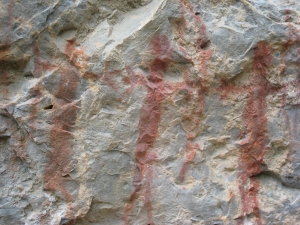
My next step was to go to my good friend and artistic cohort, Michael Hepher. Together, we worked on the design of the sculpture and how it would tell the story of the past, present and future relationships between the First Nations and white people. Michael sketched while we talked about all that we wanted the sculpture to represent. I had the idea to use people shapes derived from the ancient pictographs found throughout our region. Michael drew a traditional Ktunaxa sturgeon-nosed canoe and designed the river to which the people were carrying the canoe. The river is a symbol of our lives and the canoe represents how we travel through our lives. At the beginning of the story, the river is smooth, as the lives of native people carried on as it always had. The water becomes quite turbulent as aboriginal people try to navigate their world after the arrival of white people. At this turbulent time, the canoe is weighed down and the aboriginal people are bearing the weight of this change alone. As we move toward the present, the weight of the canoe is lessened, but still considerable and the water, while gradually calming, is still rough. Here, the white man is reaching out a hand to help with the burden of what has happened to the First Nations people. At the end of the narrative, the water is smooth and the weight is lighter as it is borne equally by both groups. The people raise their arms in celebration as they prepare to launch the canoe into the river to travel together in peace and prosperity.
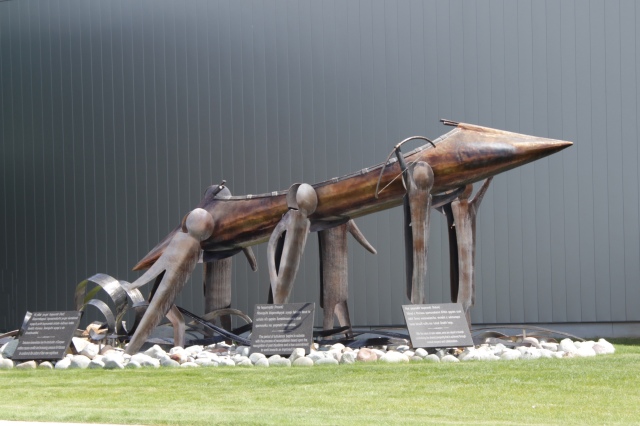 This concept received incredible support from the mayor and city council of Cranbrook, the Columbia Basin Trust, the Canadian Rockies International Airport and from the Ktunaxa Nation. It was a privilege to be able to create the Reconciliation Sculpture and after it was installed there was an amazing unveiling ceremony. One of the most vivid memories I have from that ceremony was when a friend came to me afterwards and said that he had lived in Cranbrook for 20 years and before that day, he had never shaken hands with a Ktunaxa person. Twenty years of living in the same community and having no contact with First Nations people.
This concept received incredible support from the mayor and city council of Cranbrook, the Columbia Basin Trust, the Canadian Rockies International Airport and from the Ktunaxa Nation. It was a privilege to be able to create the Reconciliation Sculpture and after it was installed there was an amazing unveiling ceremony. One of the most vivid memories I have from that ceremony was when a friend came to me afterwards and said that he had lived in Cranbrook for 20 years and before that day, he had never shaken hands with a Ktunaxa person. Twenty years of living in the same community and having no contact with First Nations people.
The vision of the sculpture was becoming a reality – reconciliation had begun. There’s still a lot of work left to do, but this public artwork has proven to be one of the catalysts for that work to begin.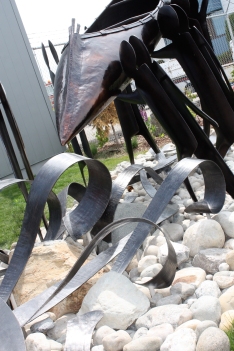


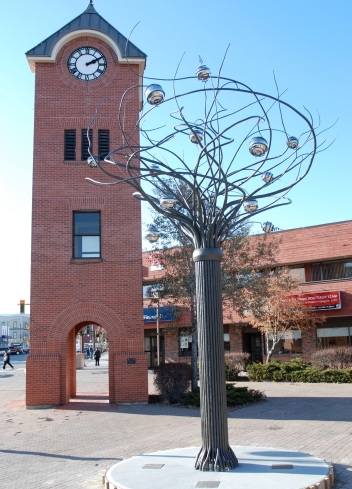 When the idea was presented to Sharron, the City of Cranbrook and a local funding agency, the Columbia Basin Trust, everyone was immediately on board. The next question was, “Where should the sculpture go?” My first thought was the city’s downtown square, which had, in recent years, fallen into disrepair. The area had been “taken over” by some pretty nefarious characters and many local people didn’t feel safe going there. By putting the artwork here, I hoped to revitalize the area and inspire people to see its potential as a source of community pride.
When the idea was presented to Sharron, the City of Cranbrook and a local funding agency, the Columbia Basin Trust, everyone was immediately on board. The next question was, “Where should the sculpture go?” My first thought was the city’s downtown square, which had, in recent years, fallen into disrepair. The area had been “taken over” by some pretty nefarious characters and many local people didn’t feel safe going there. By putting the artwork here, I hoped to revitalize the area and inspire people to see its potential as a source of community pride.